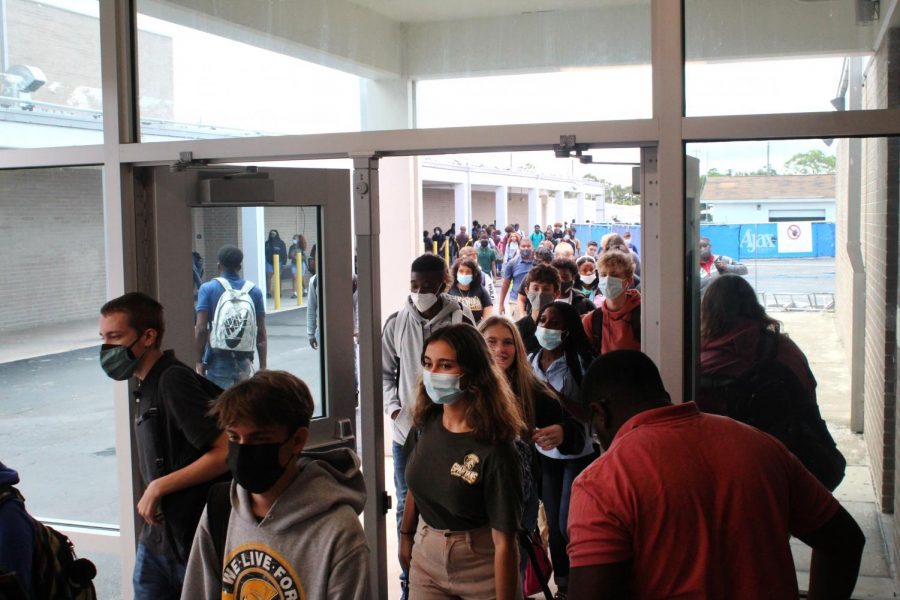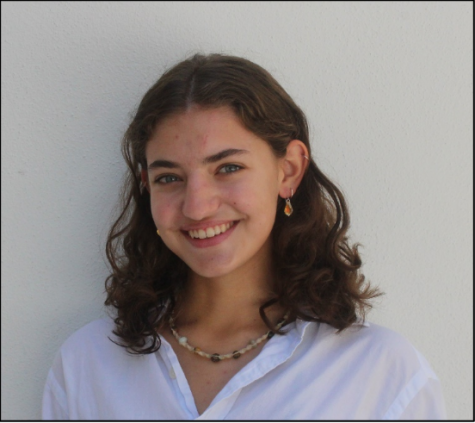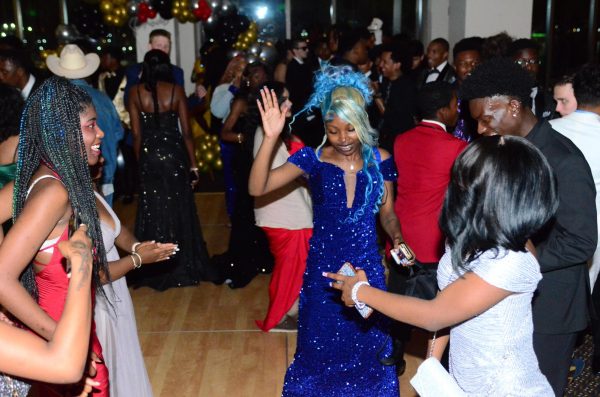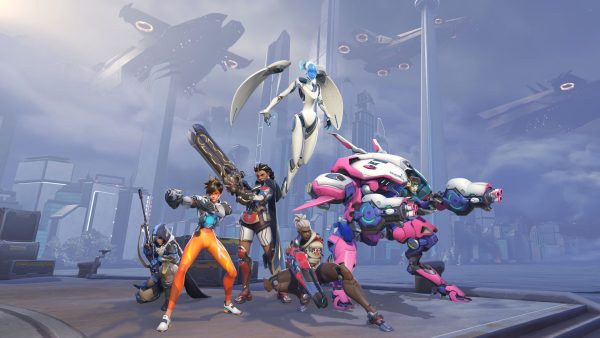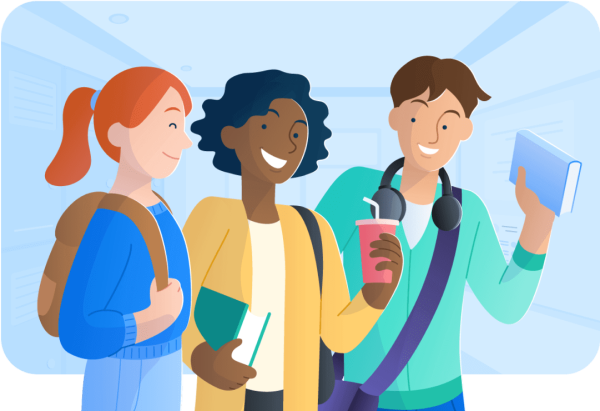We need to do more to prevent overcrowding
Reducing crowding in the hallways, may also reduce the number of coronavirus cases at Lakewood and make students safer.
Lakewood students transition during the last period of the day through the doors leading from the portables to the cafeteria on Sept. 10. Students feel the overcrowding makes it difficult to get to class on time. “The hallways frustrate me because we have a limited amount of time to get to class and sometimes (I’m) late due to the hallways being crowded, Senior Emma Ash said.
September 10, 2021
Since the 2020-21 school year, the number of students on the Lakewood campus has more than doubled. With online learning gone, there are considerably more people in the hallways moving between classes. For little Lakewood with it’s narrow halls and growing student body, the campus is ripe for overcrowding.
The most highly trafficked areas, such as the Hub, doors to the portables, and area in front of B-wing, fill with students standing about, socializing and talking with friends.
Around this time last year, we had about 400 students learning in person. With online learning no longer an option, we now have 976 students on campus. Because of this growth, along with the surge in returning students, our student body needs to be aware of overcrowding, especially with the COVID-19 delta variant running about. Even though the mask mandate has been dropped for students, the need for distancing and self awareness has not.
The problem comes when groups of students stand around motionless. Standing blocks the walkways, and prohibits others from moving along to class. What we don’t need more of is stationary feet locked in position in the middle of the hall. If you didn’t know any better, you’d think these people were set on being roadblocks. My request is this: Please stop standing in the most high-trafficked areas of the school during transition between classes.
Considering how small the walkways are, there isn’t much room for students to be having group conversations. I’m all for having fun with friends, but instead of doing it in the middle of the metaphorical highway, how about a country road? If you want to see your friends, do it in the courtyard during passing time; there are far less people.
For underclassmen, getting used to high school is a significant challenge. The shock of freshman year, or sophomores returning from online learning, is big and not to be dismissed. But please be aware of yourself and your surroundings. Standing in groups in the Hub or hallway makes things increasingly difficult for other students. It makes the odds of bumping into another person higher, and thereby increases the risk of spreading sickness. I don’t want to have to push my way through a crowd of stationary people to get from the portables to A-wing. And trust me, this is a daily experience.
This isn’t just a student issue either. Our administration has a responsibility to make transition periods as safe as possible. As I’m sure many of you know, leaving the portable classrooms involves a bit of daily chaos. Because only one of the doors is open when you come back from the portable area, the minute the bell rings, every single student is trying to get through the same set of doors at the same time. This a serious contact issue because of COVID-19, and it can be prevented by simply opening the other set of doors next to the gym. If the administration is really worried about overcrowding and the spread of COVID-19, they will take action to make sure we can get to class without being shoved together like sardines in a can.
We all understand that this is a small campus and it’s impossible not to run into others. But if students would refrain from having friendly conversations in densely crowded, high trafficked areas, and our faculty could work on helping us get to class safely, we could avoid collisions with other students and be better protected against COVID.


